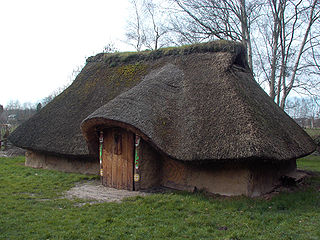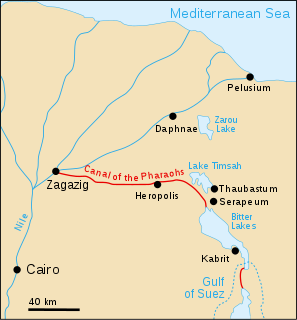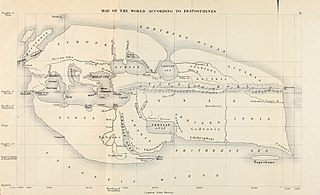Related Research Articles

The Suebi were a large group of Germanic peoples originally from the Elbe river region in what is now Germany and Czechia. In the early Roman era they included many peoples with their own names such as the Marcomanni, Quadi, Hermunduri, Semnones, and Lombards. New groupings formed later such as the Alamanni and Bavarians and two kingdoms in the Migration Period were simply referred to simply as Suebian.

Agathyrsi were a people of Scythian, or mixed Dacian-Scythian origin, who in the time of Herodotus occupied the plain of the Maris (Mures), in the mountainous part of ancient Dacia now known as Transylvania, Romania. Their ruling class seems to have been of Scythian origin.

The Menapii were a Belgic tribe of northern Gaul in pre-Roman and Roman times. According to descriptions in such authors as Strabo, Caesar, Pliny the Elder and Ptolemy their territory had stretched northwards to the mouth of the Rhine in the north, but more lastingly it stretched along the west of the Scheldt river. In later geographical terms this territory corresponds roughly to the modern Belgian coast, the Belgian provinces of East and West Flanders. It also extended into neighbouring France and the river deltas of the Southern Netherlands.

Arachosia is the Hellenized name of an ancient satrapy in the eastern part of the Achaemenid, Seleucid, Parthian, Greco-Bactrian, and Indo-Scythian empires. Arachosia was centred on the Arghandab valley in modern-day southern Afghanistan, although its influence extended east to as far as the Indus River. The main river of Arachosia was called Arachōtós, now known as the Arghandab River, a tributary of the Helmand River. The Greek term "Arachosia" corresponds to the Aryan land of Harauti which was around modern-day Helmand. The Arachosian capital or metropolis was called Alexandria Arachosia or Alexandropolis and lay in what is today Kandahar in Afghanistan. Arachosia was a part of the region of ancient Ariana.

The Hermunduri, Hermanduri, Hermunduli, Hermonduri, or Hermonduli were an ancient Germanic tribe, who occupied an area near the Elbe river, around what is now Thuringia, Bohemia, Saxony, and Franconia in northern Bavaria, from the first to the third century. At times, they apparently moved to the Danube frontier with Rome. The Thuringii may have been the descendants of the Hermunduri. Claudius Ptolemy mentions neither tribe in his geography but instead the Teuriochaemae, who may also be connected to both.

Paropamisadae or Parapamisadae was a satrapy of the Alexandrian Empire in modern Afghanistan and Pakistan, which largely coincided with the Achaemenid province of Parupraesanna. It consisted of the districts of Sattagydia, Gandhara, Buner and Udyana. Paruparaesanna is mentioned in the Akkadian language and Elamite language versions of the Behistun Inscription of Darius the Great, whereas in the Old Persian version it is called Gandāra. The entire satrapy was subsequently ceded by Seleucus I Nicator to Chandragupta Maurya following a treaty.

The names Varini (Tacitus), Varinnae, Ούίρουνοι or Viruni (Ptolemy), Varni or Οὐάρνων (Procopius), Wærne/Werne (Widsith) and Warnii probably refer to a little-known Germanic tribe. The name supposedly meant "defenders", "living by the river". They originally lived in northern Germany, but may have moved to the west during the Migration Era. In English they were called Werns or Warns. They are often called Warni and Warini in Modern English. The earliest mention of this tribe appears in Tacitus' Germania, where he wrote:
(Original Latin) "Reudigni deinde et Aviones et Anglii et Varini et Eudoses et Suardones et Nuithones fluminibus aut silvis muniuntur. Nec quicquam notabile in singulis, nisi quod in commune Nerthum, id est Terram matrem, colunt eamque intervenire rebus hominum, invehi populis arbitrantur. ..." --Tacitus, Germania, 40.
(English translation) "There follow in order the Reudignians, and Aviones, and Angles, and Varinians, and Eudoses, and Suardones and Nuithones; all defended by rivers or forests. Nor in one of these nations does aught remarkable occur, only that they universally join in the worship of Herthum (Nerthus); that is to say, the Mother Earth."--Tacitus, Germania, 40, translated 1877 by Church and Brodribb.

Melanchlaeni may refer to three ancient tribes.
Apamea or Apameia was an ancient city – and possibly two ancient cities lying close together – of Mesopotamia mentioned by Stephanus of Byzantium and Pliny as situated near the Tigris near the confluence of the Euphrates, the precise location of which is still uncertain, but it lies in modern-day Iraq.
The Praetutii, were an ancient Italic tribe of central Italy. They are thought to have lived around Interamnia, which became modern Teramo, and to have given their name to Abruzzo. The ancient accounts, however, are substantially confused, when it comes to more precise location and details.

Serica was one of the easternmost countries of Asia known to the Ancient Greek and Roman geographers. It is generally taken as referring to North China during its Zhou, Qin, and Han dynasties, as it was reached via the overland Silk Road in contrast to the Sinae, who were reached via the maritime routes. A similar distinction was later observed during the Middle Ages between "Cathay" (north) and "Mangi" or "China" (south). The people of Serica were the Seres, whose name was also used for their region. Access to Serica was eased following the Han conquest of the Tarim Basin but largely blocked when the Parthian Empire fell to the Sassanids. Yule summarized the classical geographers:
If we fuse into one the ancient notices of the Seres and their country, omitting anomalous statements and manifest fables, the result will be something like the following:—"The region of the Seres is a vast and populous country, touching on the east the Ocean and the limits of the habitable world, and extending west to Imaus and the confines of Bactria. The people are civilized, mild, just, and frugal, eschewing collisions with their neighbours, and even shy of close intercourse, but not averse to dispose of their own products, of which raw silk is the staple, but which include also silk-stuffs, fine furs, and iron of remarkable quality." That is manifestly a definition of the Chinese.

The Canal of the Pharaohs, also called the Ancient Suez Canal or Necho's Canal, is the forerunner of the Suez Canal, constructed in ancient times. It followed a different course than its modern counterpart, by linking the Nile to the Red Sea via the Wadi Tumilat. Work began under the Pharaohs. According to Suez Inscriptions and Herodotus, the first opening of the canal was under Persian king Darius the Great, but later ancient authors like Aristotle, Strabo, and Pliny the Elder claim that he failed to complete the work. Another possibility is that it was finished in the Ptolemaic period under Ptolemy II, when engineers solved the problem of overcoming the difference in height through canal locks.

Helorus, Heloros, Helorum, or Elorus, was an ancient greek city of Sicily, situated near the east coast, about 40 km south of Syracuse and on the banks of the river of the same name. It is currently an archaeological site in the modern comune of Noto.

Ariana, the Latinized form of the Ancient Greek Ἀρ(ε)ιανή Ar(e)ianē, was a general geographical term used by some Greek and Roman authors of the ancient period for a district of wide extent between Central Asia and the Indus River, comprising the eastern provinces of the Achaemenid Empire that covered the whole of modern-day Afghanistan, as well as the easternmost part of Iran and up to the Indus River in Pakistan.

White Aethiopians is a term found in ancient Roman literature, which may have referred to various non-"Negro" and light-complexioned populations inhabiting the Aethiopia region of antiquity. The exonym is used by Pliny the Elder, and is also mentioned by Pomponius Mela, Ptolemy and Orosius. These authorities do not, however, agree on the geographical location of the White Aethiopians.
Transjordan, the East Bank, or the Transjordanian Highlands, is the part of the Southern Levant east of the Jordan River, mostly contained in present-day Jordan.

The Albanoi or Albani were an Illyrian tribe whose first historical account appears in a work of Ptolemy in addition to a town called Albanopolis (Ἀλβανόπολις) located east of the Ionian sea, in modern-day Albania.
The Ambantae were a tribe, in the district of Paropamisis in Bactria near the Hindu Kush ranges in northern Afghanistan during antiquity, and who were mentioned by Ptolemy, Curtius and Strabo. Strabo records that their lands, though very cold in winter, were fertile.
The Parsii were a nomadic tribe, in the district of Paropamisadae in Bactria near the Hindu Kush ranges in northern Afghanistan during antiquity. They lived on the Oxus River, centered on the city of Parsiia.
References
- ↑ Philippus CLUVERIUS, Introductionis in universam geographiam (Leonard Lichfield, 1657) page 26.
- ↑ An Universal History, from the Earliest Account of Time, Volume 5 (T. Osborne, 1747) page 58-59.
- ↑ Ptolemy vi.11.6
- ↑ Pliny vi16.18.
- ↑ Sir William Smith, A Dictionary of Greek and Roman Geography: Iabadius-Zymethus [J. Murray, 1873] page 881